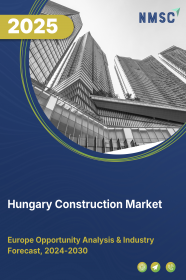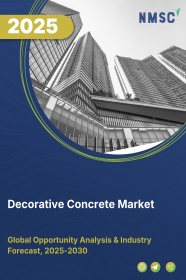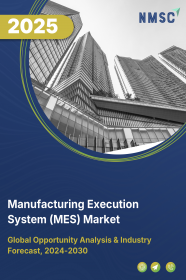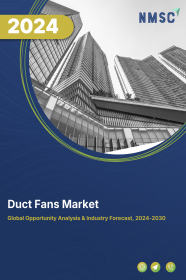
Hungary Construction Market by Type (Renovation, and New Construction), by Construction Method (Traditional, Prefabricated/Modular, 3D-Printed, and Green/Sustainable), by Contractor Type (Large Contractor, Medium Contractor, and Small Contractor), and Sector (Real Estate, Commercial, Infrastructure, Industrial) – Industry Trends and Forecast, 2025–2030
Industry: Construction & Manufacturing | Publish Date: 05-Jun-2025 | No of Pages: 84 | No. of Tables: 117 | No. of Figures: 62 | Format: PDF | Report Code : CM2210
Hungary Construction Industry Overview
The Hungary Construction Market size was valued at USD 12.97 billion in 2024, and is projected to grow to USD 14.76 billion by 2025. Additionally, the industry is expected to continue its growth trajectory, reaching USD 19.73 billion by 2030, with a CAGR of 6% from 2025 to 2030.
Hungary construction market is expanding steadily, bolstered by robust government spending and EU funding focused on power, energy, and transportation infrastructure. Major initiatives such as the Paks II Nuclear Power Plant and projects under the REPowerEU Plan highlight the country’s commitment to green energy and sustainable mobility, with investments in solar power, smart grids, and zero-emission public transport.
However, the market faces challenges from complex regulatory procedures, which can delay project timelines and increase costs. Despite these barriers, the growing adoption of digital technologies, including Building Information Modeling (BIM), AI, and IoT, presents significant opportunities to improve project efficiency, collaboration, and overall infrastructure development.
Government Spending Drives Hungary Construction Market Trends
Hungary construction market is undergoing significant growth, fueled by increased government investment and European Union (EU) funding in infrastructure projects, particularly in the power, energy, and highway sectors. In December 2024, the Hungarian government announced a USD 1.3 billion investment to resume 270 transport infrastructure and utility projects in 2025, previously suspended in 2022 due to the energy crisis.
A flagship project is the USD 13.8 billion Paks II Nuclear Power Plant, advancing in 2024 with a 2-gigawatt capacity to boost nuclear energy’s share by 2030. Additionally, the EU’s Recovery and Resilience Facility (RRF) allocated USD 7.2 billion in 2024–2025 for Hungary’s green transition, including USD 471 million for solar panel installations in 35,000 low-income households and USD 488 million for digitalizing energy infrastructure, such as smart grids and 816,000 smart meters.
Sustainable Transportation Initiatives Propels the Hungary Construction Market Growth
Hungary’s commitment to sustainable transportation is playing a pivotal role in advancing its construction market. In 2024–2025, a range of initiatives backed by government support and EU funding are driving large-scale infrastructure development.
In February 2025, the Ministry of Construction and Transport announced plans to build a 40-km four-lane motorway linking Szombathely, Körmend, and Kőszeg, complemented by long-term rail network upgrades targeted for completion by 2035. Additionally, under the EU-backed REPowerEU Plan, substantial investments are being made to modernize railway infrastructure, introduce 300 zero-emission buses, and expand tram and trolleybus systems.
Projects such as the ongoing modernization of the Budapest-Belgrade railway are central to Hungary’s efforts to enhance cross-border connectivity while aiming to reduce transport-related greenhouse gas emissions by 90% by 2050. These developments underscore the country’s focus on sustainable mobility, creating new opportunities across the Hungary construction market.
Regulatory Complexities is a Barrier to Hungary Construction Market Expansion
In the construction market, overcoming regulatory complexities poses a significant challenge. Infrastructure projects often encounter obstacles due to the intricate web of government regulations and permitting procedures.
Infrastructure endeavors demand numerous permits and approvals from governmental bodies at local, regional, and national levels. These mandates encompass adherence to zoning regulations, environmental assessments, compliance with building codes, safety standards, and various regulatory stipulations.
The lengthy process of acquiring permits, bureaucratic inefficiencies, and disparities in regulations among different jurisdictions can substantially prolong project timelines and inflate costs. Furthermore, fluctuations in regulations or unexpected policy changes can disrupt ongoing projects and deter potential investments.
Integration of Digitalization and BIM Presents Lucrative Opportunity for the Market Expansion
The construction industry is undergoing a significant digital transformation, driven by the increasing adoption of Building Information Modeling (BIM), which is opening up new avenues for growth. BIM supports digital design, simulation, and infrastructure oversight, improving precision, collaboration, and resource optimization.
Reflecting this trend, ALLPLAN launched Allplan 2024-1 in April 2024 to enhance BIM capabilities and streamline cloud-based workflows, underscoring the sector’s shift toward fully digital project execution. Moreover, the convergence of AI, IoT, and cloud technologies is further enabling real-time collaboration, predictive maintenance, and efficient facility management.
Competitive Landscape
The key players operating in the Hungary construction industry include CBRE Hungary, Matthew & Daniel's, Progress Group, ASA Construction Ltd, STRABAG, JLL, Tower International, Duna House, Otthon Centrum, Futureal Group, Immobilia Plc, Indotek Group, DVM group, Cordia Group, Wing Zrt., and others.
Hungary Construction Market Key Segments
By Type
-
Renovation
-
New Construction
By Construction Method
-
Traditional Construction
-
Prefabricated/Modular Construction
-
3D-Printed Construction
-
Green/Sustainable Construction
By Type of Contractor
-
Large Contractor
-
Medium Contractor
-
Small Contractor
By Sector
-
Real Estate
-
Residential
-
Affordable
-
Luxury
-
-
Commercial
-
Retail Buildings
-
Office Buildings
-
Hospitality
-
Healthcare Facilities
-
Educational Institutes
-
Entertainment Ventures
-
-
-
Infrastructure
-
Transportation
-
Airport
-
Port
-
Rail
-
Road
-
-
Water and Wastewater
-
Energy
-
Telecommunication
-
-
Industrial
-
Manufacturing Plant
-
Warehouses
-
Power Plants
-
Oil Refineries
-
Chemical Plants
-
Key Players
-
CBRE Hungary
-
Matthew & Daniel's
-
Progress Group
-
ASA Construction Ltd
-
STRABAG
-
JLL
-
Tower International
-
Duna House
-
Otthon Centrum
-
Futureal Group
-
Immobilia Plc
-
Indotek Group
-
DVM group
-
Cordia Group
-
Wing Zrt
REPORT SCOPE AND SEGMENTATION:
|
Parameters |
Details |
|
Market Size in 2024 |
USD 12.97 Billion |
|
Revenue Forecast in 2030 |
USD 19.73 Billion |
|
Growth Rate |
CAGR of 6% from 2025 to 2030 |
|
Analysis Period |
2024–2030 |
|
Base Year Considered |
2024 |
|
Forecast Period |
2025–2030 |
|
Market Size Estimation |
Billion (USD) |
|
Growth Factors |
|
|
Companies Profiled |
15 |
|
Market Share |
Available for 10 companies |
|
Customization Scope |
Free customization (equivalent up to 80 working hours of analysts) after purchase. Addition or alteration to country, regional, and segment scope. |
|
Pricing and Purchase Options |
Avail customized purchase options to meet your exact research needs. |

















 Speak to Our Analyst
Speak to Our Analyst

















